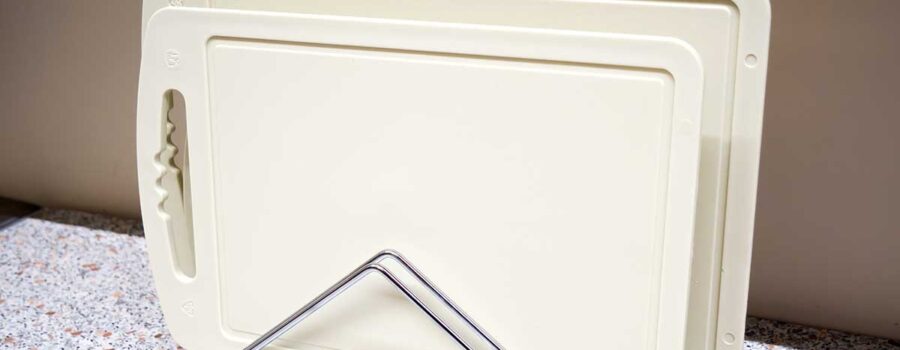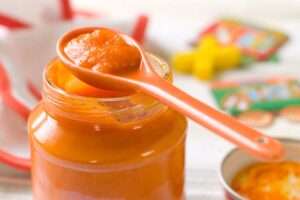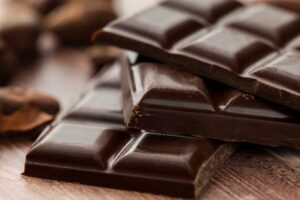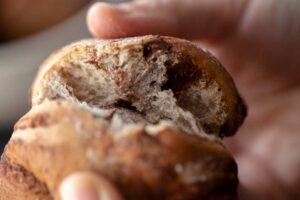They sure are convenient and cheap, but it turns out plastic cutting boards might have a little secret they’re not telling us. As we dice and slice, something more than just veggies might be getting chopped up. That’s right, I’m talking about the invisible, sneaky guests – microplastics – that could be gatecrashing our meals. Grab your aprons, and let’s delve into the surprising story hidden beneath the surface of these plastic cutting boards, our everyday kitchen heroes.
A Tiny Problem with a Big Impact
Imagine this: you’re chopping up some carrots on your plastic cutting board, but little do you know, it’s shedding tiny plastic particles right into your food. Yep, those invisible little bits are called microplastics, and they’re sneaking into our meals. And when they get cozy in our food, they’re not just gatecrashing your dinner; they’re bringing along health risks that could affect us in the long run, including hormone disruption and digestive concerns.
Go Green, Ditch Plastic Cutting Boards
Here’s the kicker – these plastic cutting boards aren’t just a potential health hazard; they’re also not doing our planet any favors. Every time we toss out a worn-out plastic board, it adds to the mountain of plastic waste out there. Worse still, these tiny plastic bits can end up in rivers and oceans, messing with wildlife and ecosystems. It’s like a bad movie plot, but it’s happening in our own kitchens!
Ditch Plastic, Embrace Wood and Bamboo Cutting Boards
Alright, so plastic cutting boards might not be the MVPs we thought they were. But don’t worry, there are some awesome alternatives out there! Wood and bamboo cutting boards are not only easier on the eyes, but they’re also kinder to our knives and the environment. Plus, they come with this cool superpower – natural antimicrobial properties. That’s right, they’re naturally good at keeping the bad guys (bacteria) at bay.
Guarding Plastic Cutting Boards in the Kitchen
Now, if you’re still team plastic cutting boards, no judgment here! Just remember to play detective with your boards. Keep an eye out for scratches and grooves where those sneaky plastic particles might be hiding. If your board looks like it’s seen better days, it might be time to bid it farewell and welcome a new one. And hey, why not mix it up? Use different boards for veggies and meats to keep things clean and tidy.
Embracing the Change, One Slice at a Time
So, there you have it – the hidden story behind plastic cutting boards. It’s not just about making a meal; it’s about making a choice for our health and our planet. Let’s embrace the change, one chop, slice, and dice at a time, and turn our kitchens into a beacon of health and sustainability. Remember, every little change counts, especially when it’s for the better. Happy chopping!
References:
- “Cutting Boards Can Produce Microparticles When Chopping Veggies, Study Shows.” American Chemical Society, www.acs.org/pressroom/presspacs/2023/june/cutting-boards-can-produce-microparticles-when-chopping-veggies.html.
- US Department of Commerce, National Oceanic and Atmospheric Administration. “What Are Microplastics?” NOAA’s National Ocean Service, 13 Apr. 2016, oceanservice.noaa.gov/facts/microplastics.html.
- Campanale, Claudia et al. “A Detailed Review Study on Potential Effects of Microplastics and Additives of Concern on Human Health.” International journal of environmental research and public health vol. 17,4 1212. 13 Feb. 2020, doi:10.3390/ijerph17041212
- Learn about Aquatic Trash | US EPA – U.S. Environmental Protection Agency, www.epa.gov/trash-free-waters/learn-about-aquatic-trash.
- Munir, Muhammad Tanveer et al. “Testing the Antimicrobial Characteristics of Wood Materials: A Review of Methods.” Antibiotics (Basel, Switzerland) vol. 9,5 225. 1 May. 2020, doi:10.3390/antibiotics9050225








